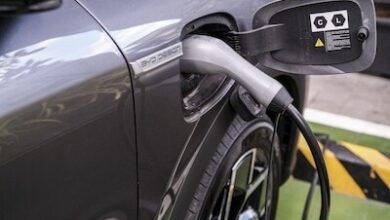Why Are Electric Vehicles More Likely To Hit Pedestrians?

Opinions expressed by Entrepreneur contributors are their own.
You’re reading Entrepreneur India, an international franchise of Entrepreneur Media.
Electric Vehicles are more likely to hit pedestrians, as per a new study published in the Journal of Epidemiology & Community Health.
According to a British Newspaper, researchers examined and found that electric and hybrid cars are twice likely to hit pedestrians than their fuelled counterparts.
The battery-powered cars were not more dangerous than their counterparts in rural areas.
However, in cities and towns, EVs were three times more likely to hit pedestrians than petrol or diesel cars.
“One plausible explanation for our results is that background ambient noise levels differ between urban and rural areas, causing electric vehicles to be less audible to pedestrians in urban areas.”
The researchers said.
The findings came to the fore after assessing data from UK travel and road accident data from 2013 to 2017. They examined 51 billion kilometres of travel by battery-powered cars and 4.8 trillion kilometres of petrol and diesel car trip and found that the average annual pedestrian casualty rate per 160 million kilometres was 5.16 for electric and hybrid cars.
What do experts say?
That it’s a sound problem for pedestrians.
Mukesh Kumar Bansal, CTO, TelioEV, a charging management solutions provider said that electric vehicles operate more quietly than regular vehicles.
“The increased number of pedestrian incidents involving electric vehicles highlights the vital intersection of technology and safety on our roadways. Pedestrians may face additional dangers because EVs operate more quietly than regular vehicles, particularly in metropolitan locations with higher ambient noise levels.”
Phil Edwards, author of the study also raise this question and said that electric cars are a hazard to pedestrians because they are less likely to be heard than petrol or diesel cars.
He added, “The government needs to mitigate these risks if they are going to phase out the sale of petrol and diesel cars.”
How can we overcome this?
Bansal says that we must develop solutions that increase pedestrian awareness of EV presence, such as implementing pedestrian alert systems or enhancing vehicle design for improved visibility.
“Some potential solutions include outfitting electric vehicles with artificial noisemakers or starting campaigns to educate pedestrians about the silent nature of EVs. Education programmes for both automobiles and pedestrians are critical to encouraging understanding and prudence in shared environments. Finally, by prioritizing safety alongside technological innovation, we can promote peaceful coexistence of electric vehicles and pedestrian mobility,” Bansal added.
Meanwhile, Nicola Christie, professor in transport safety at UCL, said people are used to looking for certain cues to signal when a car is approaching.
“When these cues are missing this could be very problematic for people in busy urban areas. The problem could be exacerbated for people with poor visual acuity or for children who find it hard to judge the speed and distance of vehicles,” she added.



